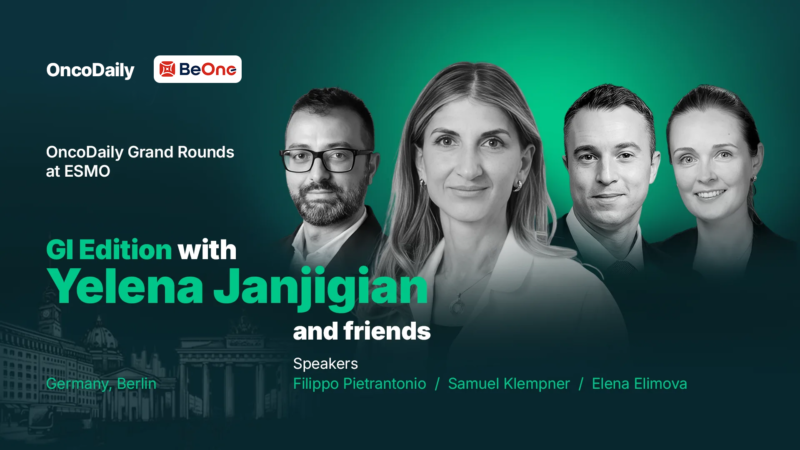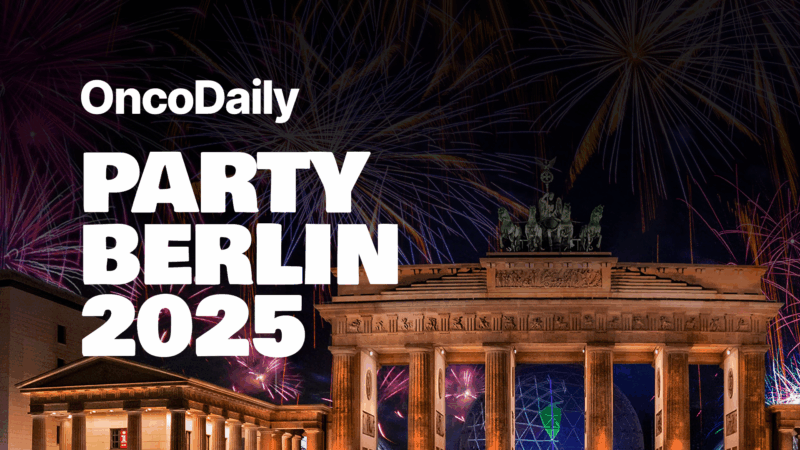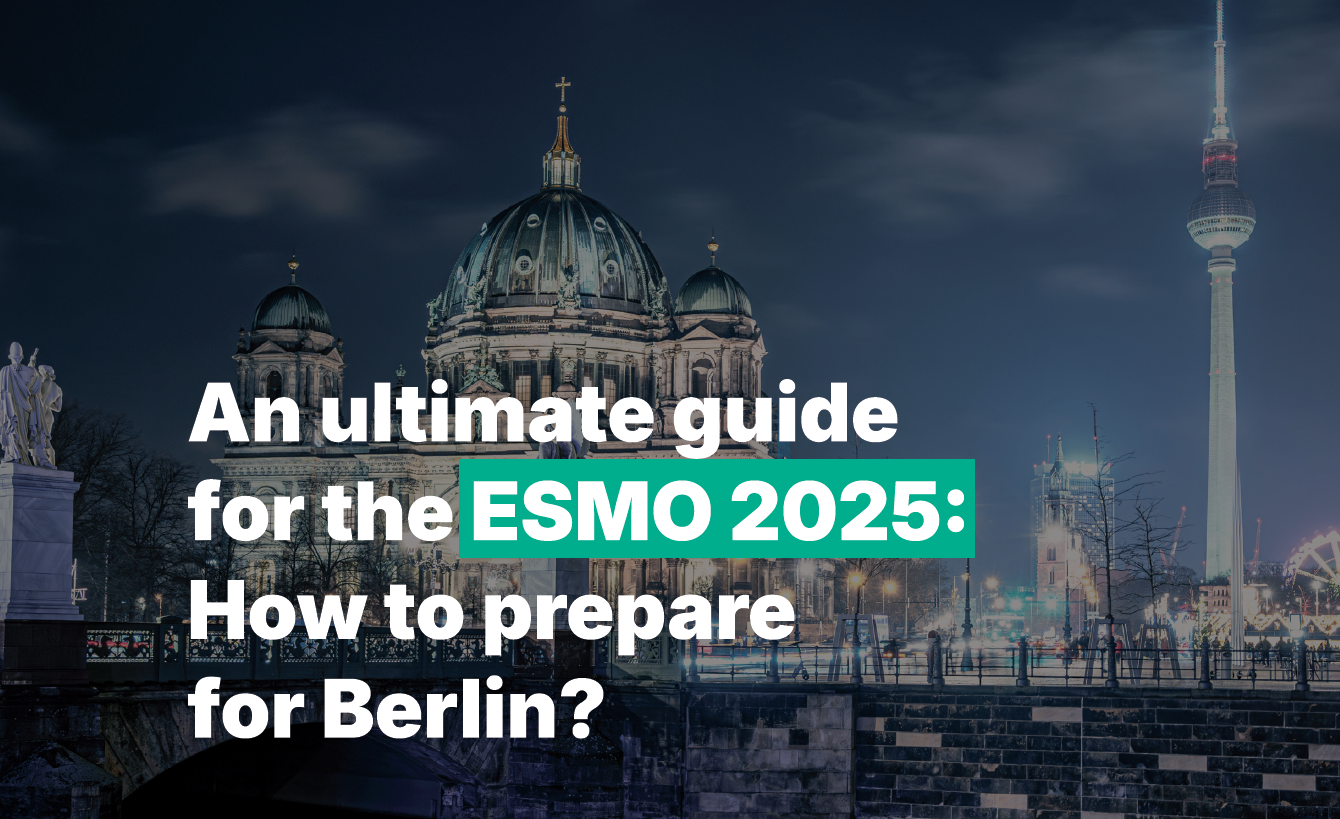The European Society for Medical Oncology (ESMO) Congress is Europe’s flagship oncology meeting and one of the most important global events in cancer care. In 2025, thousands of oncologists, researchers, trainees, and policy leaders will gather in Berlin to share practice-changing science, debate challenges, and connect with peers from every continent.
If this is your first ESMO, welcome to the busiest five days of your professional year. The congress is big – spread across multiple halls at Messe Berlin – and wonderfully dense. With a little planning, it becomes far less overwhelming and a lot more rewarding.
First Things First: When and Where is ESMO 2025?
- Dates: October 17–21, 2025
- Location: Berlin, Germany (Messe Berlin, Messedamm 22, 14055)
Berlin is a vibrant host city with direct connections across Europe and globally. Expect packed auditoriums, bustling poster halls, and late-night discussions that spill out into the cafés and restaurants near the venue.
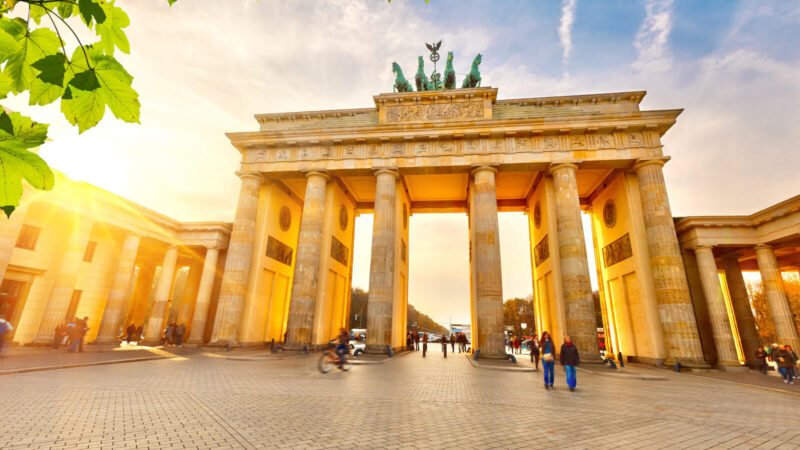
2. Getting in, getting around
Badges are printed on site in Hall 2.1 and serve as your key to almost everything – session rooms, exhibition halls and, for most registered delegates, Berlin’s public transport (zones ABC) from 17–21 October. Keep your badge and a photo ID handy on trains and S-Bahn; inspectors only ask to see them if required. If you misplace your badge, reprints are possible once for a fee, so treat it like your passport.
Berlin is a rail city. From the airport or Central Station, take the S-Bahn S3 or S9 towards Messe Süd, which brings you directly to the venue. The U-Bahn stations nearest the South Entrance are a long walk, so transferring to S-Bahn is usually the most straightforward option. Taxis and ride-hailing services operate widely; drop-off is signposted at the entrances.
Your first hour on site
Print the badge, connect to the conference Wi-Fi (SSID #ESMO25), and open the ESMO Events app. The app is effectively your compass: full program, live updates, and interactive floorplans that generate turn-by-turn walking routes (you can scan a QR to keep directions on your phone). If you need a physical reset point, the main cloakroom is in Hall 2.1, and seating areas are sprinkled throughout all levels.
Two staffed information points sit at the South Entrance, and roving “ASK ME” teams are on the floors. If a room reaches capacity, staff will direct you to an overflow area where the session is streamed with headsets.
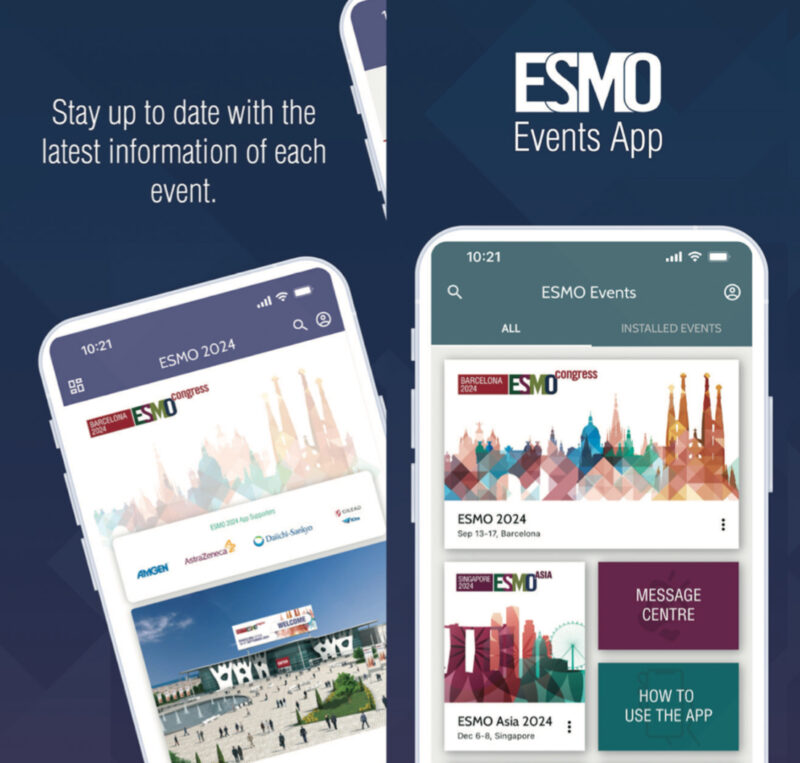
The rhythm of the days
The Opening Session (Friday, 17 Oct, 12:00–13:45, Hub 27) sets the tone. The Exhibition runs daily until 18:30, food courts and cafés are never far away, and posters rotate by disease area in Hall 25 with lunchtime discussions (12:00–12:45). ePosters are online from Saturday morning.
OncoDaily will publish daily highlights of the congress not to miss and of course, if you want to meet our team on-site, reach out to our social media pages for a quick response.
Practicalities that quietly matter
Badge scans happen at auditoria and in the Exhibition (you can decline). First aid points are in Halls 2.1 and 3.2, with 112 for emergencies outside. The venue is step-free, fully accessible, and alcohol- and smoke-free. Childcare and a mothers’ room are available (Passau 3 (Mezzanine), open 06:30–21:30). Media recording is strictly regulated. Congress content is ESMO copyright. Recording in scientific sessions, satellites, the Exhibition and Poster Area is prohibited unless you have specific accreditation and permissions.
Membership, certification, and learning beyond the week
Membership has tangible on-site benefits – dedicated service desks (Hall 2.1 and Hall 4.2), and the Member Lounge (Hall 25) with workstations, printers, power, and refreshments (open Fri 09:00–18:00; Sat–Mon 08:00–18:00). It also affects how long you can access webcasts after the meeting: once the Virtual Platform closes, scientific sessions move to OncologyPRO (members: 5 years; registered non-members: 6 months; satellite durations vary).
If you’re sitting the ESMO Examination, it takes place Saturday, 18 October (13:00–15:30) in Hall 9, with enrolment from 11:30 and limited on-site registration for members that morning. The exam carries 50 ESMO-MORA CME points and is recognized within specific national frameworks.
Certificates of Attendance can be downloaded from Tuesday, 21 October for two weeks via the ESMO website after a short evaluation (use your ESMO login).
A note on data and privacy
ESMO may scan badges at auditoria entrances for operational/stats purposes; third-party badge scans inside the Exhibition may be for marketing. It’s your choice to consent. If you do, standard contact data are transferred; any processing must meet GDPR standards. You can always say no.
ESMO is designed to be navigable: clear color-coded level signage, staffed info points, interactive floorplans, and ample overflow seating keep the flow moving. Bring good shoes, a flexible plan, and a curiosity for the conversations that happen between the slides. That’s where a lot of the real learning begins.
Food, money, and where to pause
Berlin runs on the euro (€), with ATMs in the Central Foyer and cafés and food courts across all halls. Most outlets take cards, but if you step outside, try a quick Currywurst or a Berliner doughnut. If you’ve got an evening free, dive into heartier fare like Eisbein or Käsespätzle. Neighborhoods like Kreuzberg and Prenzlauer Berg buzz with food markets and street stalls, making them perfect spots to unwind after a long day of science.

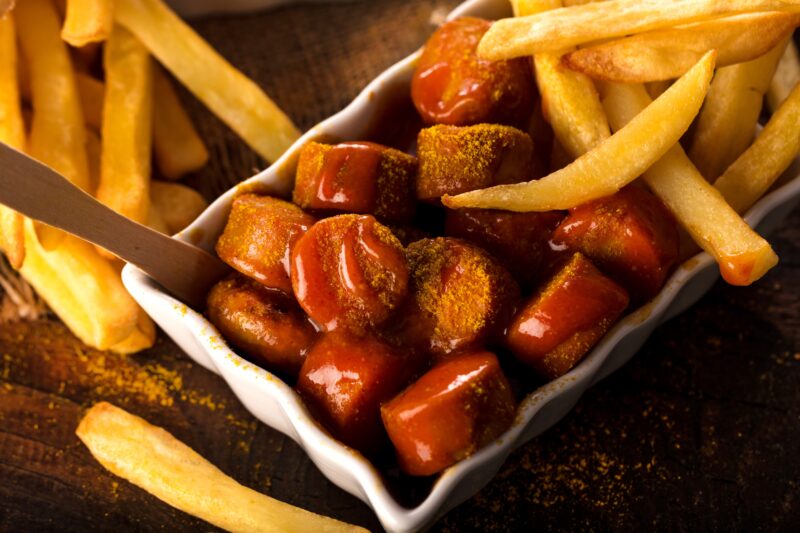
3. Getting the most from the program
The program is deep and busy. The Events app lets you filter by day, topic, cancer type, or track, then pin sessions to a personal agenda. If a must-see fills up, head to the signposted overflow rooms where sessions are relayed. Presenters upload slides through the Speaker Centre systems; personal laptops aren’t used in session rooms, so if you’re speaking, allow time for a final check in Hall 6.2 (presenters/chairs only).
Must-Attend Sessions
The congress begins with the Opening Session on Saturday, 18 October (12:00–13:30, Berlin Auditorium, Hub 27). This is where ESMO lays out its vision for the future of oncology and sets the tone for the days ahead.
But the true scientific heartbeat lies in the Presidential Symposia – sessions that present practice-changing trials likely to shift guidelines. Don’t miss:
The Scientific Heartbeat: Presidential Symposia
But the true scientific heartbeat lies in the Presidential Symposia – sessions that present practice-changing trials likely to shift guidelines. Don’t miss:
- Presidential I (Fri, 17 Oct, 16:30–18:30): From breast cancer’s high-stakes DESTINY-Breast11 and DESTINY-Breast05 to KEYNOTE-905 in muscle-invasive bladder cancer and KEYNOTE-B96 in ovarian cancer, this session brings some of the most anticipated results in oncology.
- Presidential II (Sat, 18 Oct, 16:30–18:30): Landmark trials in lung, prostate, and urothelial cancers, including HARMONi-6, OptiTROP-Lung04, PSMAddition, and disitamab vedotin in first-line urothelial carcinoma.
- Presidential III (Sun, 19 Oct, 16:30–18:30): Spotlight on biomarker-driven innovation – ctDNA-guided strategies in bladder and colon cancer (IMvigor011, DYNAMIC-III), PRAME-targeted TCR therapy in uveal melanoma (IMA203), and FORTITUDE-101 in FGFR2b-overexpressing gastric/GEJ cancer.
These are the “don’t miss” moments of the congress – the ones you’ll see discussed in guidelines, press releases, and clinics soon after Berlin. Check out the full program and bookmark your sessions to personalize your meeting.
Beyond the Plenaries: Hidden Gems in Proffered Papers
Some of the most intriguing shifts in oncology will surface in Proffered Papers.
In breast cancer, the SOLTI-RIBOLARIS trial tests ribociclib-based strategies, while long-term results from NATALEE and monarchE may finally settle how CDK4/6 inhibitors shape early HR+ disease. In the metastatic setting, VIKTORIA-1 and new ADC head-to-heads against T-DM1 are poised to redefine HER2+ and HER2-low treatment.
Gastrointestinal cancers bring equally high stakes: the MATTERHORN update on perioperative immunotherapy, IMbrave152/SKYSCRAPER-14 in HCC, and the final PEGASUS trial in colorectal cancer are all markers of how ctDNA and immunotherapy are rewriting the rules.
Lung cancer will be buzzing with updates like FLAURA2 and ALEX on targeted sequencing, DREAM3R on SCLC, and fresh ADC data from Beamion Lung 1 and SOHO-01. Melanoma takes a bold step with NADINA and SWOG S1801 in neoadjuvant/adjuvant immunotherapy, while the Safe Stop trial finally asks: when is it safe to stop PD-1 therapy?
In GU cancers, POTOMAC clarifies immunotherapy in NMIBC and EMBARK delivers survival results in high-risk prostate cancer. Add to this the ICON8B and AtTEnd updates in gynecologic oncology, new sarcoma strategies like legubicin vs doxorubicin, and supportive care studies like QUALIOR – and you see how wide-ranging this track is.
Even translational science brings surprises, from PATHFINDER-2 early detection to evidence that breastfeeding enhances T-cell immunity against breast cancer.
These are the rooms where tomorrow’s guidelines begin, and where ideas from basic science, patient experience, and rare cancers quietly gain the momentum to transform practice.
4. ESMO 2025 Young Oncologists Track: Where Careers Begin
The Young Oncologists (YO) Track at ESMO 2025 is designed by young oncologists for young oncologists, offering a mix of career guidance, practical skills, and networking in a welcoming environment. It’s one of the most popular parts of the Congress, not only because it delivers knowledge tailored to early-career needs, but also because it connects participants with peers and leaders who can help shape their future in oncology.
Across the track, attendees can expect mentorship opportunities, fellowship insights, and interactive forums that address the real questions facing young oncologists today.
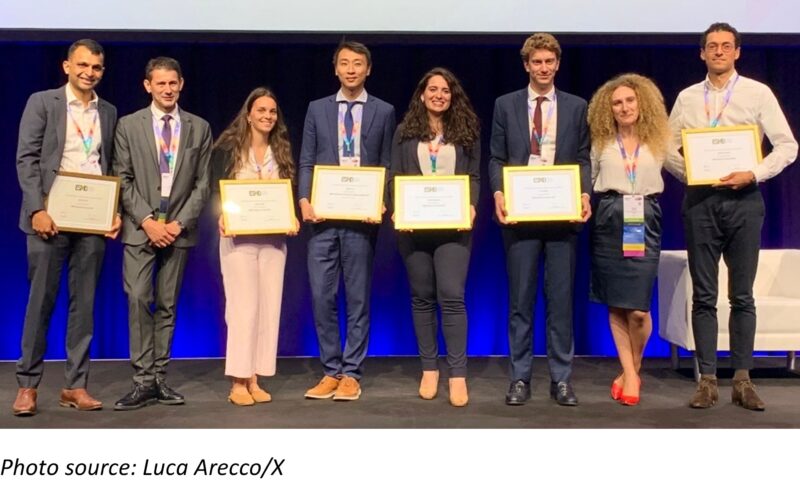
A Sneak-Peak Into a Few of The Sessions
YO Mentorship Session will give participants the chance to sit with experts in small groups and hear candid advice about career paths. Whether it’s Jon Zugazagoitia (Spain) on becoming a clinician scientist, Cristian Massacesi (USA) on working in the pharmaceutical industry, Rachel Riechelmann on clinics and research in LMICs, or Florian Scotté (France) on the role of palliative care, the session promises authentic conversations with leaders who have walked the path.
Another highlight is the Fellowships in Europe Session, which showcases opportunities across the continent and offers guidance from past fellows. The session will close with the presentation of the 2025 Fellows and Best Exam awards, showing where dedication and preparation can lead.
Finally, the Young Oncologists Forum focuses this year on collaboration – from building local and national networks to working with industry and scientists. With speakers like Chiara Cremolini (Italy), Aleix Prat (Spain), Angelika Starzer (Austria) and Jonathan Lim (UK), participants will leave with practical strategies for connecting across disciplines and borders.
Whether you are looking for mentorship, planning a fellowship, or aiming to build a collaborative research career, the YO Track at ESMO 2025 is the place to start.
And of course, participate on the on-site social media campaign where ESMO invites the community to take selfies and tell their story using #myESMOStory – to connect with colleagues who might have had the same or similar experience. A tip – tag OncoDaily, ESMO and colleagues in your posts to make sure to be noticed on the very busy social media during those days. And if you got an invitation to the Young Oncologists dinner – congrats and don’t miss the opportunity to make international work-friends!
Remember, it is all about the community.
Awards & Recognition
ESMO is also about celebrating contributions to oncology. Major awards such as the ESMO Lifetime Achievement Award, Women for Oncology Award, and Translational Research Award are announced at the Congress. These moments are inspiring reminders of the long road from trainee to international leader.
Networking After Hours
The real networking often happens outside formal sessions:
- Institutional Receptions: Many hospitals and research groups host evening meetups.
- Special Events: Keep an eye on OncoDaily Party and Grand Rounds
- Berlin Nightlife: Don’t underestimate the informal dinners and gatherings – that’s where collaborations often start.
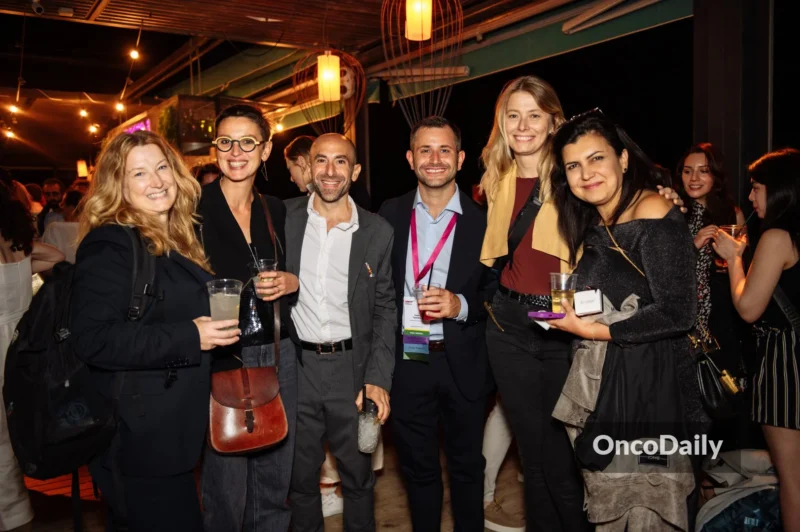
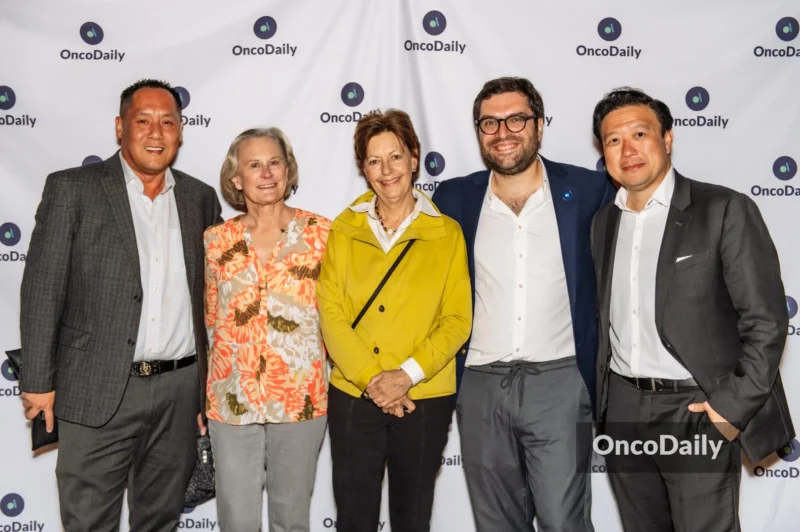
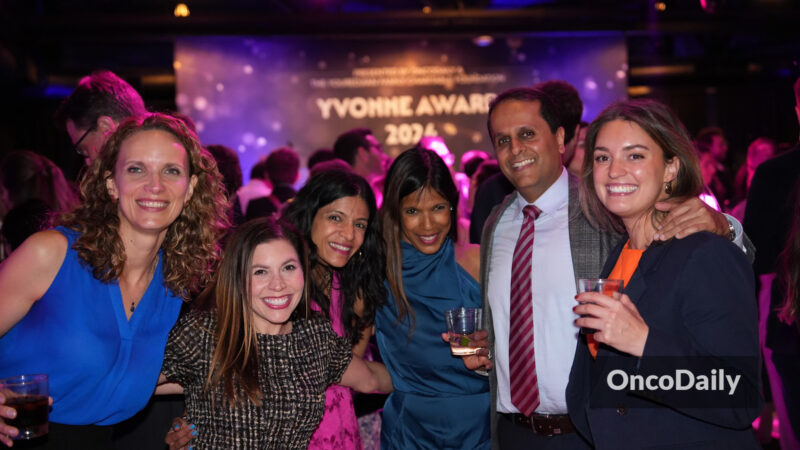
4. Final Tips for Trainees
Plan but stay flexible. Poster sessions are the easiest place to come up with your next idea that has a shot at a poster for the next big event. Follow #ESMO25 to stay connected in real time. And remember: pace yourself. Bring curiosity, comfortable shoes, and the courage to join the conversation. The rest will follow.
by Elen Baloyan, MD, Managing Editor of OncoDaily
Do not miss:
OncoDaily Grand Rounds at ESMO 2025: GI Edition with Dr. Yelena Janjigian and Friends
